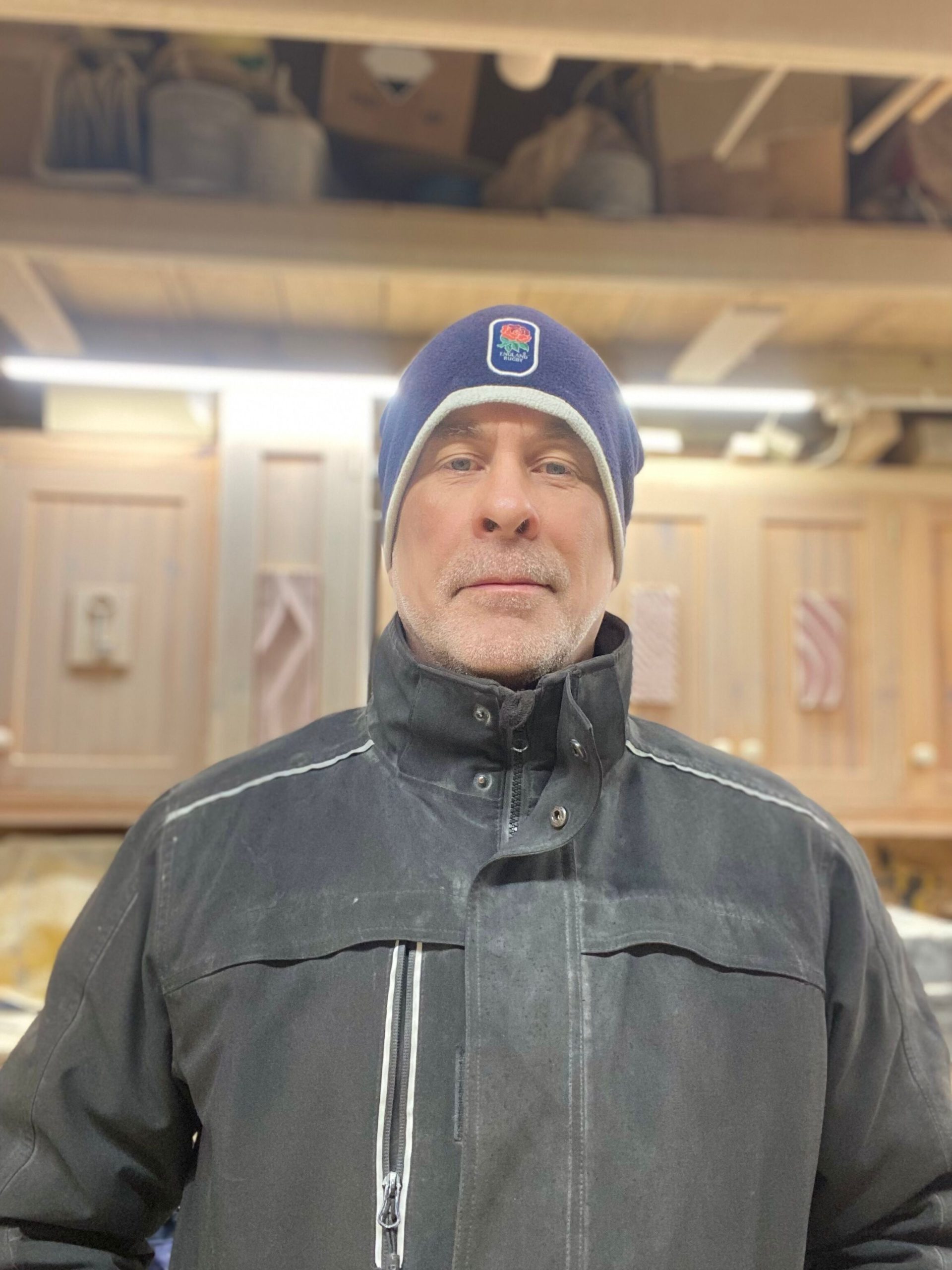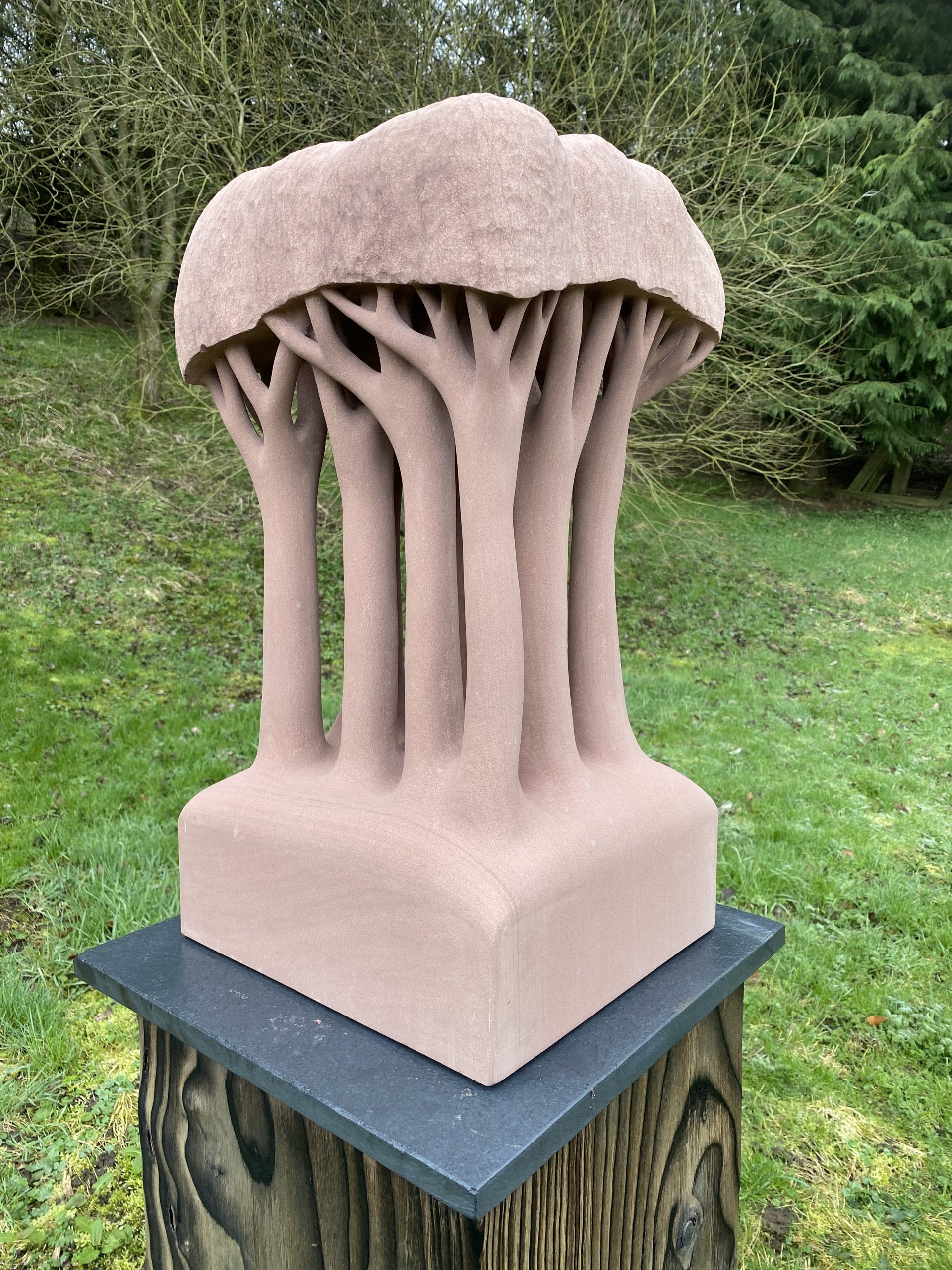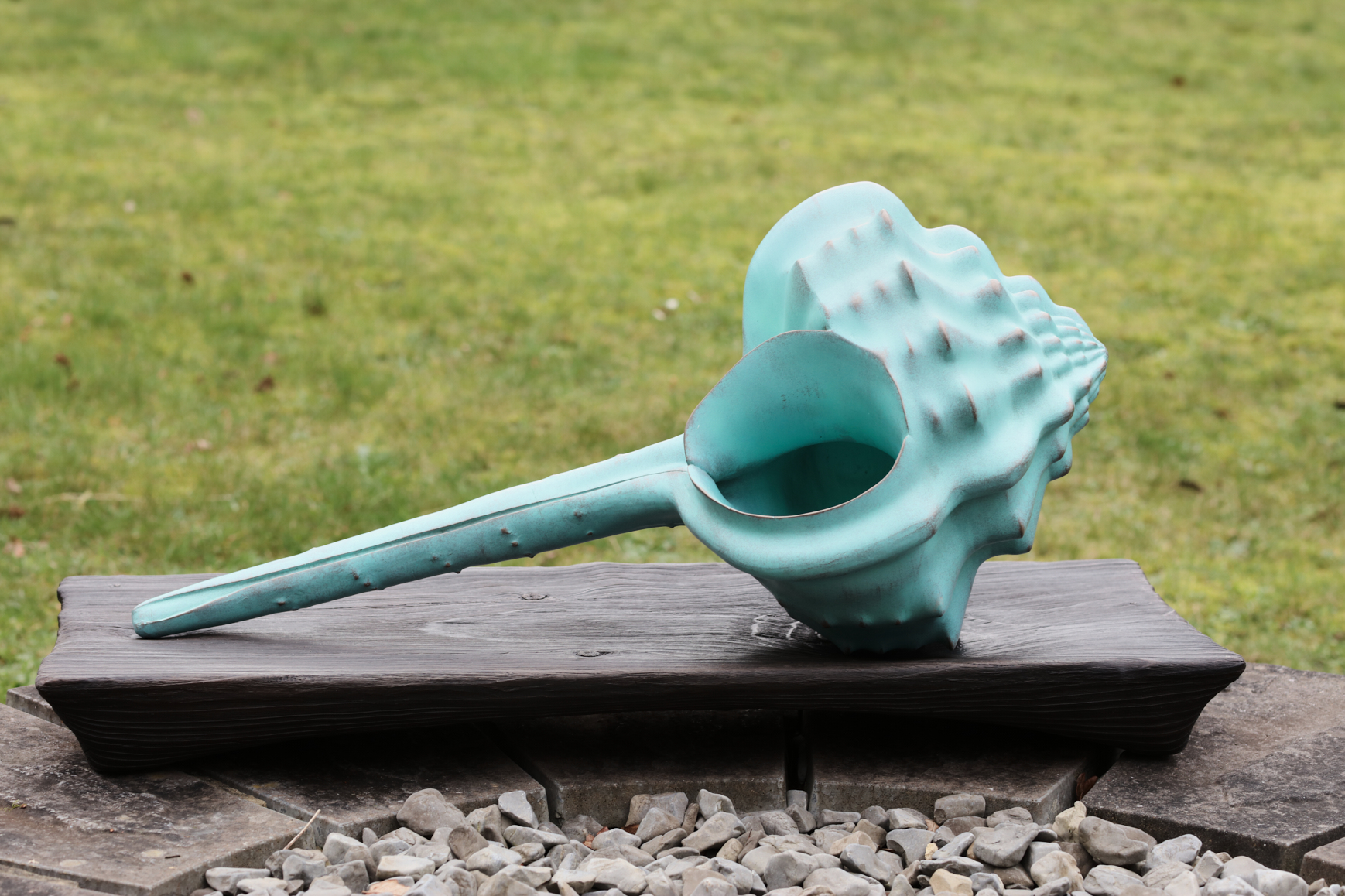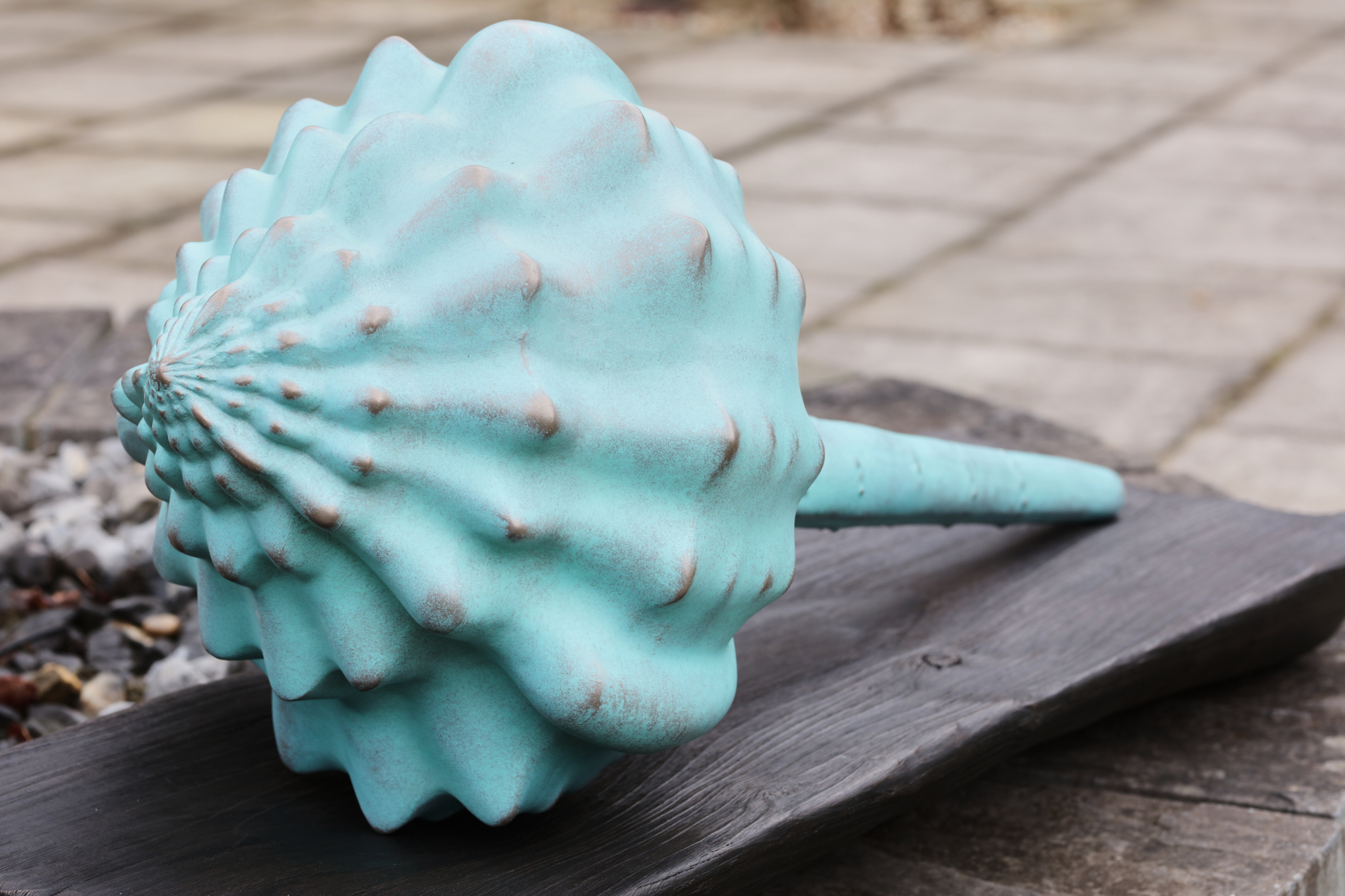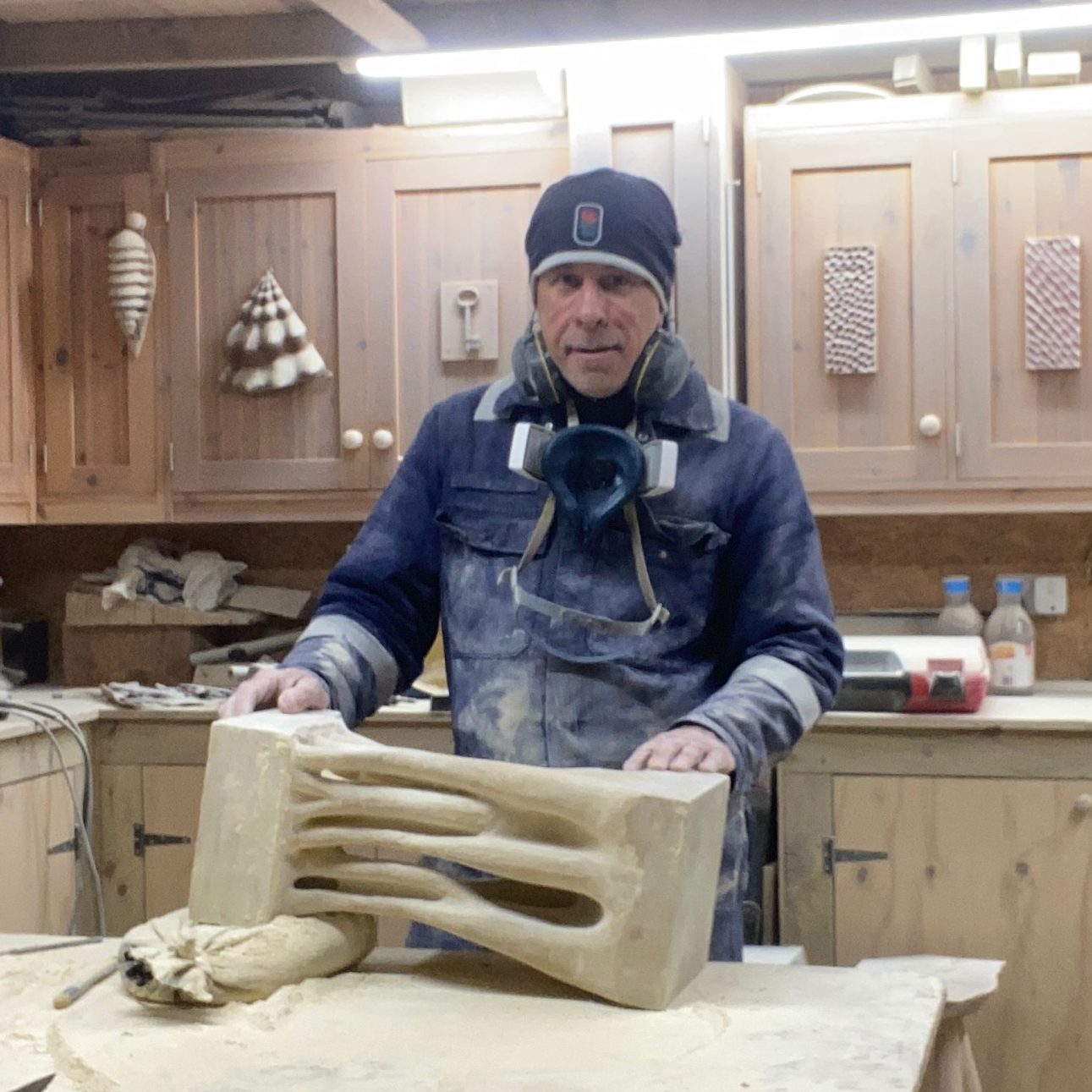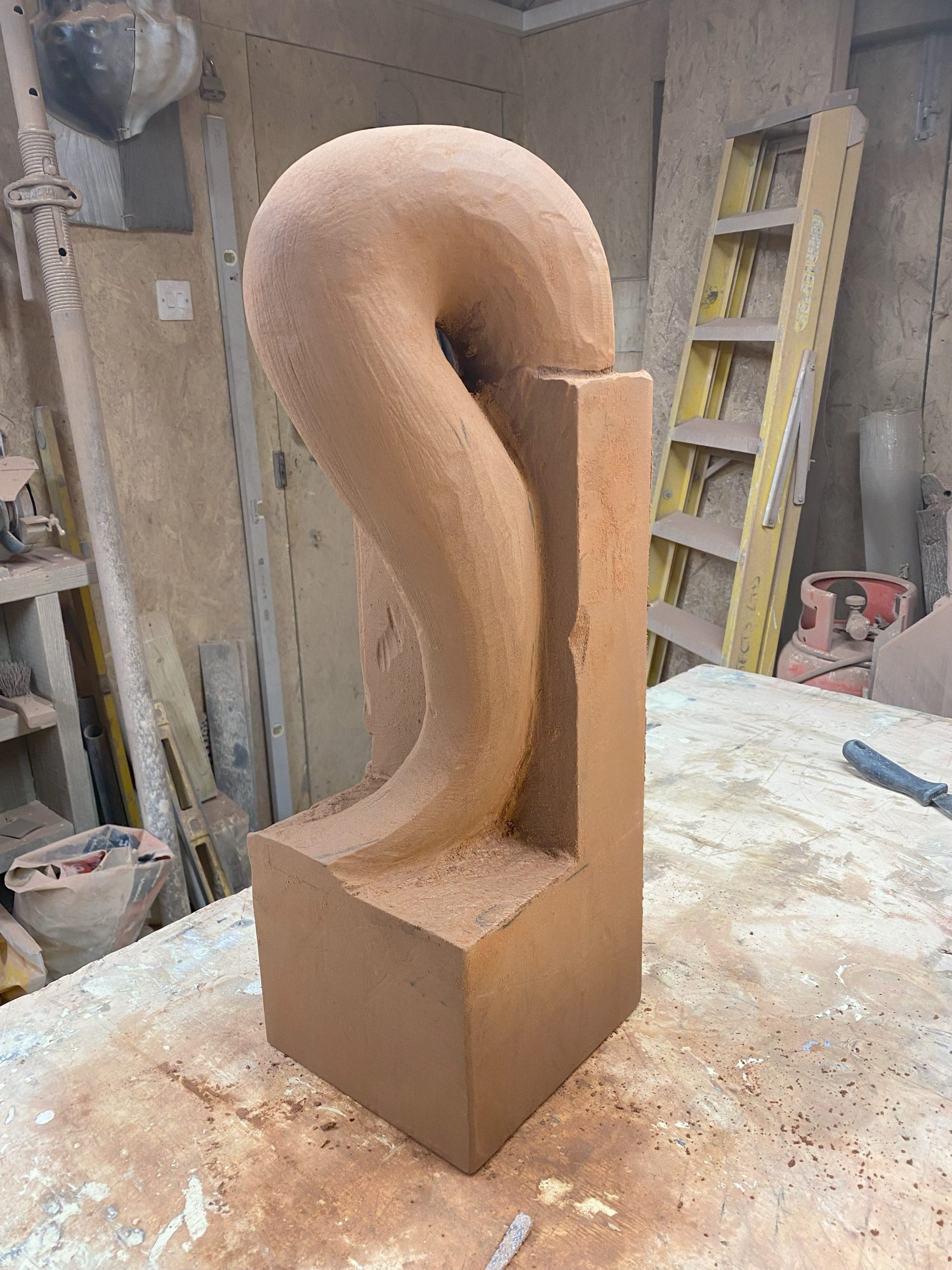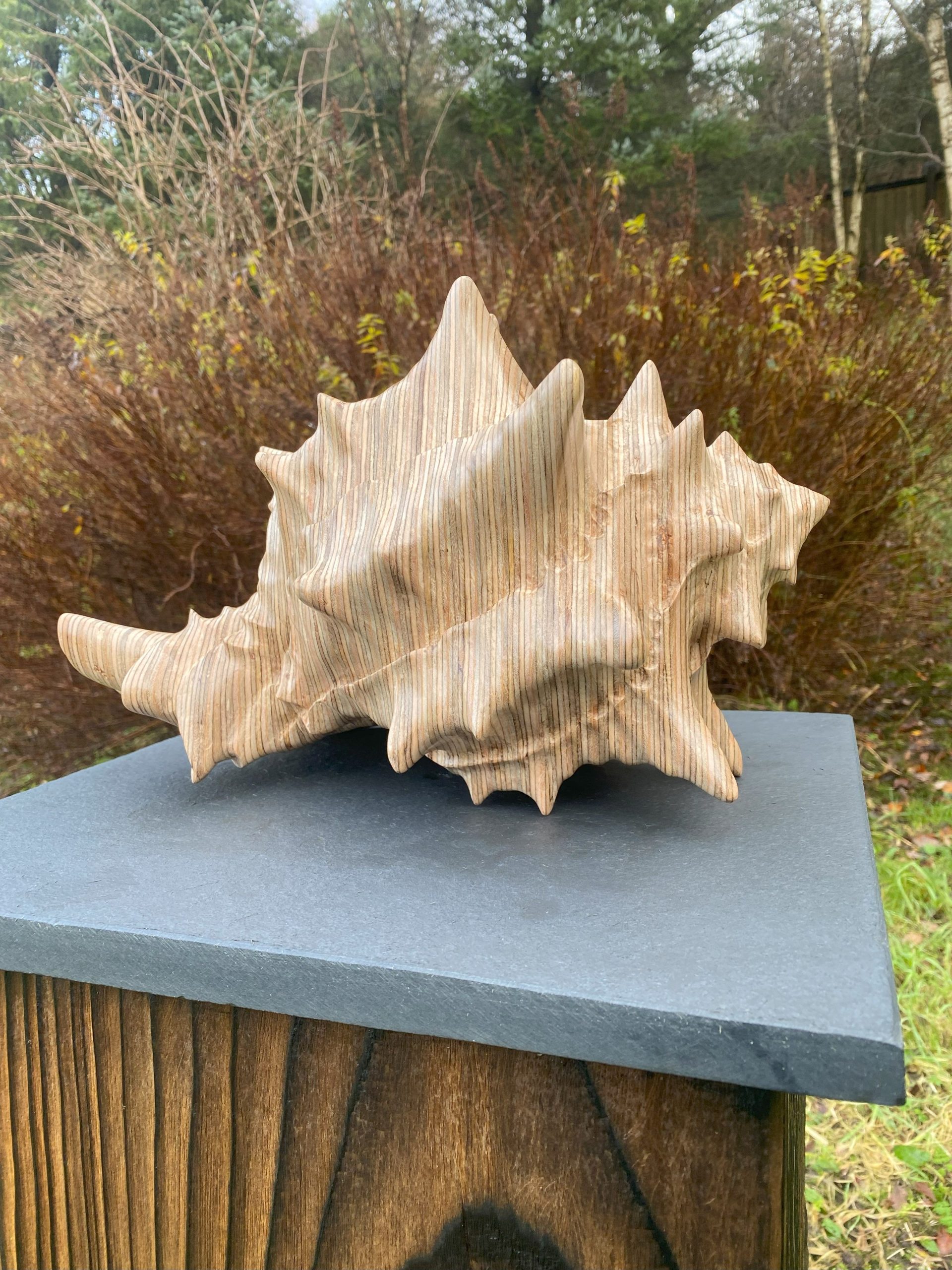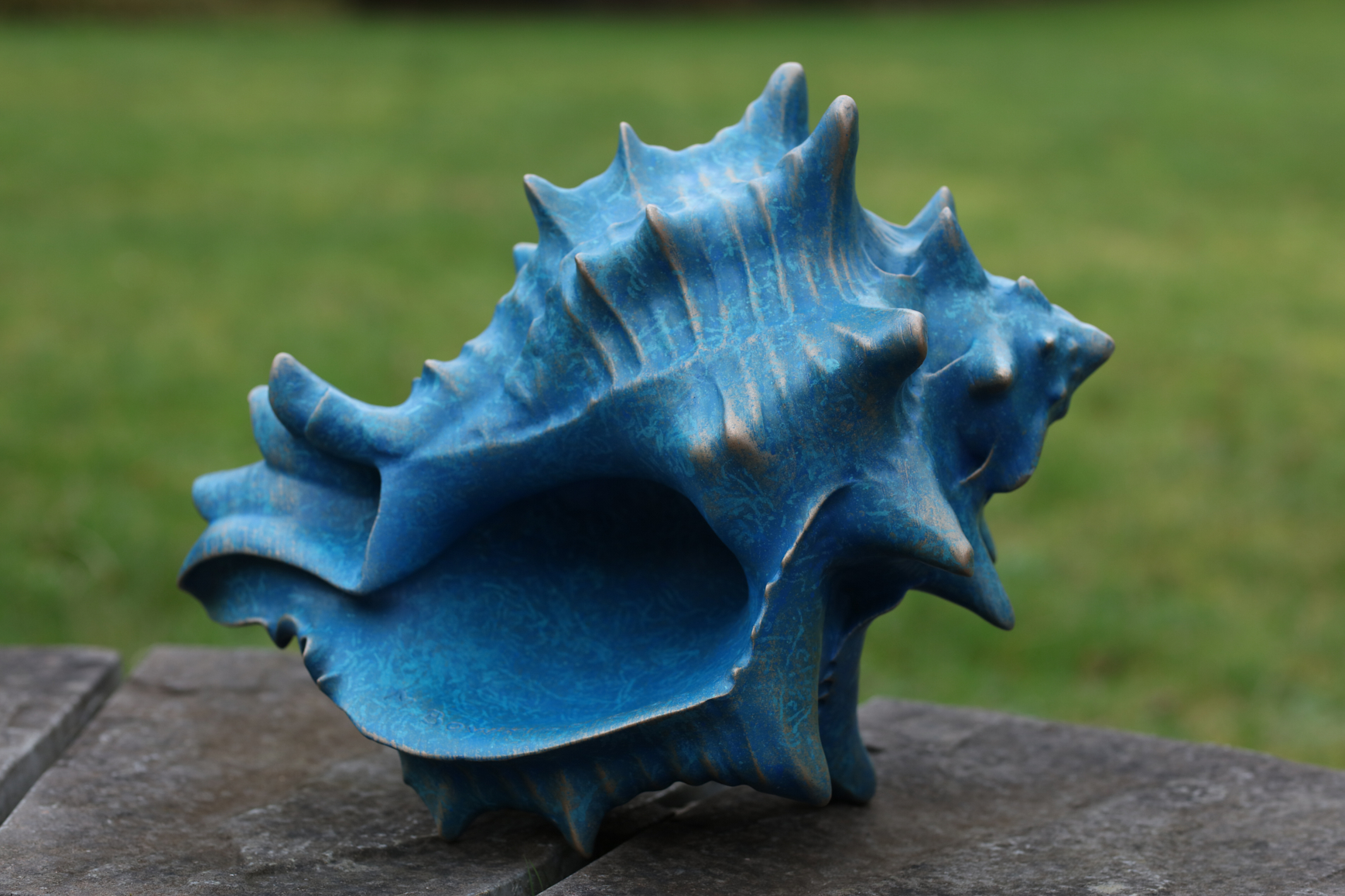Sculptor Mark Bowman is relatively new to full time art-making. Having trained in architectural technology, Mark spent much of his career in construction and working on offshore oil rigs. He learnt to sculpt in his spare time and is now pursuing art as his full-time occupation. This unique background has led to fascinating experimentation in his pieces, in both form and material, exploring natural contours and forces alongside modern technicality and industry.
We caught up with him ahead of this year’s Summer Exhibition to get to know more about him and his practice.
Have you had any formal training? Have you worked with other sculptors or are you totally self-taught?
As a project manager much of my life has been spent working with architects and designers. Through the study, interpretation and execution of other people’s designs and despite no formal training in sculpture, I feel I have developed an awareness which is serving me reasonably well in my own sculptural practice. Having trained as an architectural technician when I was a young man, I went on to spend several years working with a master stone mason and a further year with an artist blacksmith. These early encounters fuelled my interest in making and set me up for a lifetime of experiment, investigation and practice.
What has been the biggest influence on your work, and which artists do you particularly admire?
I have had a keen interest in architecture and engineering throughout my career and I suppose the single most influential person for me has been the Spanish architect, engineer and sculptor Santigo Calatrava. Using a combination of pure engineering principle alongside exquisite organic aesthetic, Calatrava has for me, created the most beautiful and interesting buildings, structures and sculpture.
From a purely sculptural perspective, I would have to include people like Albert Giacometti, Henry Moore, Auguste Rodin, Lynn Chadwick, Anthony Gormley, David Nash, Kenneth Armitage and Mario Marini amongst some of my many other influences.
How long have you been sculpting – are you now sculpting full-time?
Whilst I have been sculpting and making on a part time basis for most of my life, I have only recently taken the plunge and started to show my work. My first group exhibition was with the Cotswold Sculpture Association at their Creating Spaces exhibition in 2022 and I have since had quite an encouraging response to my work.
I have also been lucky enough to have a number of decent sales over the last two years, along with several awards. I’ve been sculpting full time now for almost 12 months and have been working hard to further develop my practice.
Does your technological background influence the way you have worked?
Working within the design constraints of a construction project often left me keen to investigate more unconventional applications for the materials in common use. The exposure I’ve had to the techniques, tools and equipment used to work these materials has, on many occasions, been the catalyst to learn a new technique or experiment within my own practice. Results have ranged from unusual objects I really love to total failure and a strong understanding of why certain materials have been developed for very specific uses!
What are the most inventive aspects of your work?
Whilst I like to use a range of different materials, I particularly enjoy sculpting in materials intended solely for specific, unrelated purposes (e.g. “Female Torso” or “Lips” carved from aerated concrete foundation blocks or a shell from laminated plywood).
Considering the physical characteristics of a medium and how they might affect the outcome of a particular piece is a stimulating exercise in itself and often results in the most rewarding work. I’ve never been very good at doing what I’m told. However, throughout my life, I’ve found my best work is always the result of going “off-piste”
You say the form of a thing is a result of all it endures. How do you apply this to your
work and do you feel the making process is very much a part of the finished piece?
Most of my work involves a very physical process over many weeks and sometimes months. As for most sculptors, the process is, I suppose, a bit of a journey. It’s jokingly been said sculpture is 10% art and 90% grunt!
Carving, for example, as a subtractive process, can be similar to a form of erosion. Just as ancient stone steps are shaped by thousands of footsteps, a stone carving has had thousands of hammer blows to a chisel or thousands of revolutions of a grinding tool. Every footstep, hammer blow or revolution has had an effect or contribution to the final piece, no matter how slight. The human life is probably no different.
Where a piece has material added, as in clay or plaster, it grows, like a tree or plant does as material is added. The shape of the final form is obviously a direct result of where that material is placed. However, the placement of the material can be affected by many things. Sometimes intelligent effort dictates a very specific position, other times, external environmental influences alter the intent and with it the result. For some observers of a piece, the process is of no importance, either because they are unaware of the journey or because they are concerned only with the final form. Whatever the process, a piece of art has obviously arrived at its current form as a result of the artists intent. However, either consciously or sub-consciously, I believe the original intent is constantly altered throughout the process. The resulting “organised chaos” is a sublimely human journey. More often than not, it is the most personal of journeys, full of errors, corrections, humiliations, alterations and hopefully, joy. A private diary of a journey, opened up to the world for judgement. Quite daunting really if you stop and think about it in those terms.
What are the intellectual ideas behind your work?
Often when I am exploring or developing an idea, the direction of travel can change unexpectedly, leading me along a completely different route. This is particularly true for abstract work.
I’m fascinated by the effects of erosion for example and have completed pieces on the subject in both stone and plywood. A fellow sculptor (a medical research scientist in a previous life) commented that my erosion pieces reminded her of trabecular (bone structure), which is obviously an example of growth. Her comment led me to investigate a whole new world of forms which have since crept into my thinking. I like the idea of combining organic growth in different forms which to me, feel like a natural extension of one another. Vertebrae growing leaf or fungi forms for example or twisted ivy trunks growing human limbs.
I have also dipped into emotional responses to my own personal circumstances which I have preferred to leave to the observer to interpret as they see fit.
What is your preferred medium? You are obviously highly versatile working in so
many different ways.
I suppose my preferred medium is the one I happen to be working with at any given time. I tend to chop and change quite a bit if I don’t have a clear direction at the time. Sometimes I’ll have a specific idea that I want to develop which I think would be best executed in a particular medium or I might use material that I happen to have available and which I like the look of. I love the freedom to be able to choose a medium on a whim.
I think the most important thing about trying new mediums is being prepared to be unhappy with initial attempts. The idea that one can pick up a new medium and produce a piece of work of the same technical standard as someone with years of experience is frankly delusional. That said, over the years, I have found that many techniques and skills can be interchangeable across mediums with the appropriate amount of care and consideration. Once a reasonable level of skill has been reached, which can obviously take a while, it does make the whole creative process far more enjoyable.
What do you feel about stone carving versus working in plywood?
One of the main reasons for experimenting with plywood has been its stability. Large pieces of timber are very hard to fully dry and often produce cracks and shakes as they continue to dry. This can be a wonderful organic process in itself but can often be undesirable. I’ve found gluing plywood together to produce a block to carve from is the idea solution to this.
The “strata” of the ply not only adds a particular visual aesthetic to a finish piece, it also assists in the carving process by acting as “height” or “contour” lines. In contrast, stone is far less susceptible to atmospheric conditions. Whilst it can still suffer under extreme frosts or long-term erosion if positioned outside, it is on the whole, far more robust and has a certain gravitas and permanence.
How big an influence do you think working on the rigs has had on your
development?
At the time, I found the offshore working environment was pretty much devoid of art in the conventional sense. Being a sculptor on an oilrig often felt like I imagined a fish would feel on a motorbike. Certainly not something to discuss in public! However, creativity and problem solving were always present in some form or other and I found interest in the most mundane design solutions and beauty in some of the most complex.
The spectacle of huge industrial structures and the violence of extreme conditions has probably left brutalist fingerprints on my creative consciousness somewhere but I feel I remain a fairly organic creature at heart. In the latter half of my offshore career I was responsible for logging and planning for the impact of natural forces on operations and equipment. The discipline of this type of observational work further developed the way I see the world around me. This of course feeds into my creative work.
Where have you shown and what prizes have you won?
The Sculpture Park, Farnham, Surrey – October 2023 – to date
The Sculpture Gallery, The Corn Exchange, Leeds – September 2023 – to date
Cotswold Sculpture Association – Creating Spaces 2023, The Garden at Miserden, Gloucestershire, UK -1 June – 31 July 2023
Royal Scottish Academy – 197th Annual Exhibition, The Mound, Edinburgh, Scotland – 6th May – 11th June 2023
“Shell” awarded “Open Exhibition Prize”
Great North Art Show – 2022, Rippon Cathedral, Yorkshire – 9 September – 10 October 2022
Awarded “Best Body of Work” by judges from Tennant’s Fine Art Auctioneers.
Judges’ comments – “An incredibly powerful, innovative and though provoking body of work. Mark’s varied organic forms are striking as individual pieces, but together demonstrate his extraordinary technical ability across a diverse range of contemporary and traditional materials”
Cotswold Sculpture Association – Creating Spaces 2022, The Garden at Miserden, Gloucestershire – 1 June – 31 July 2022
Awarded “People’s Choice” for “Ply with Hole”

